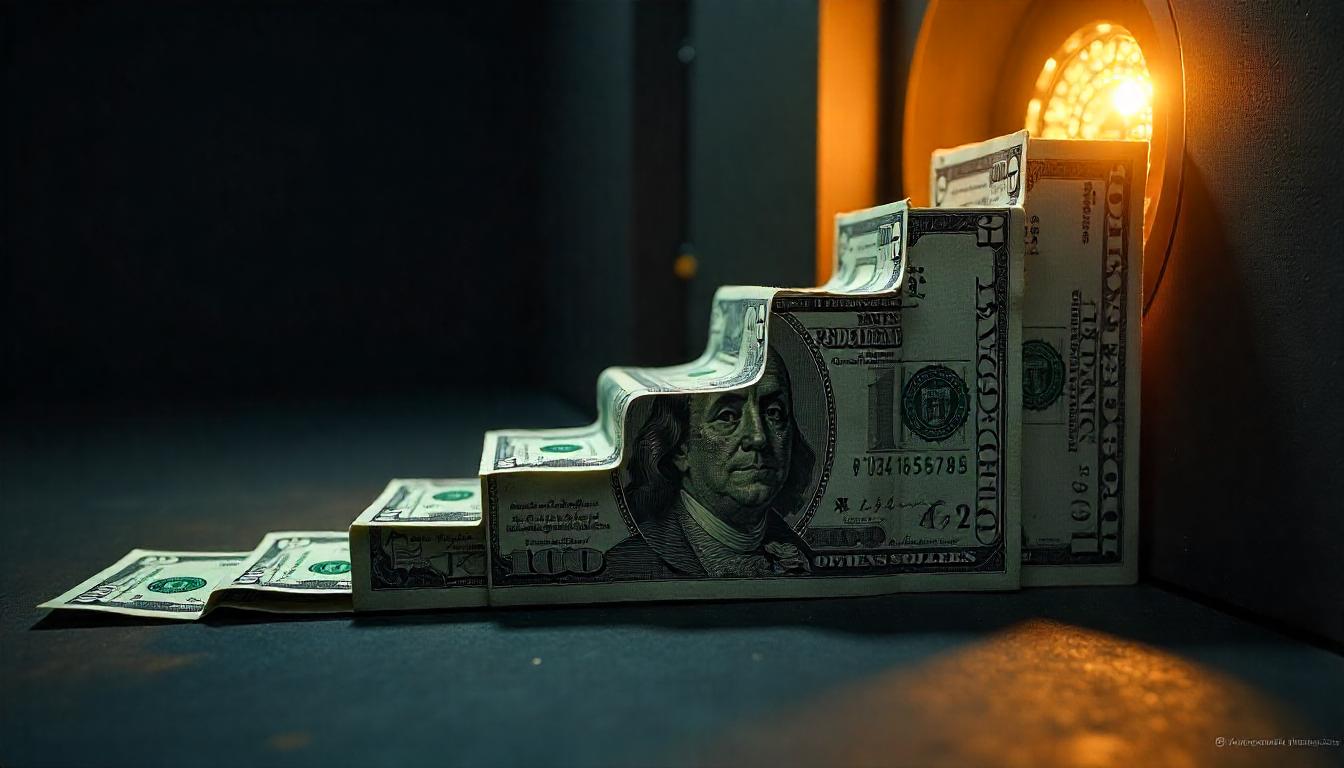Dollar Gains Ground, but Analysts Warn the Rally May Be Short-Lived — Bitcoin Faces Pressure
The U.S. dollar is showing signs of recovery after one of its worst six-month stretches in decades, potentially weighing on bitcoin and other risk-sensitive assets. However, analysts believe the bounce may be more of a temporary correction than the start of a lasting uptrend.
The U.S. Dollar Index (DXY), which measures the dollar against a basket of major currencies, has climbed 1.4% to 98.30, rebounding from a three-year low of 96.37. The move breaks a downtrend that began in February and marks a technical breakout above a key descending trendline.
A stronger dollar often leads to tighter global financial conditions and reduced appetite for risk, which historically has put downward pressure on bitcoin prices.
“The dollar’s back-to-back weekly gains are driven by stronger-than-expected U.S. data and a modest uptick in rates,” said Marc Chandler, Chief Market Strategist at Bannockburn Capital Markets. “But this rally still looks like a classic corrective bounce after a sharp decline.”
Markets have revised their expectations for U.S. monetary policy, with Fed funds futures now pricing in 25 basis points less easing by year-end, helping fuel the greenback’s recent strength.
ING: U.S. Data and Japan Risk Fuel Dollar Strength
Analysts at ING also see room for the dollar to remain supported in the near term, citing strong retail sales and jobless claims as reasons for a hawkish shift in Fed rate expectations.
“We expect the residual 14 basis points of rate cuts priced for September to be gradually pulled back,” ING noted. “This could add downside pressure on EUR/USD, while uncertainty ahead of Japan’s elections could lift USD/JPY above 150.”
Japan’s Upper House Vote in Focus
Investors are closely watching Japan’s upcoming Upper House elections, where political instability could weigh on Japanese assets and push safe-haven flows into the dollar.
Japan’s ruling coalition — the Liberal Democratic Party and Komeito — needs at least 50 of 125 seats to retain a majority. Recent polls suggest a possible shortfall, raising concerns about Tokyo’s ability to manage fiscal policy and negotiate trade terms with the U.S.
Pre-election pledges of tax cuts and cash handouts are also stoking fiscal worries, while rising speculation about a Bank of Japan rate hike adds to market uncertainty.
“A poor result for the ruling coalition could destabilize Japan’s policy outlook and reinforce yen weakness,” ING said.
Longer-Term Outlook: Skepticism Persists
Despite the current momentum, not everyone is convinced the dollar’s strength will last.
“The U.S. macro picture hasn’t improved meaningfully,” said Griffin Ardern, Head of Options Trading at crypto platform BloFin. “Inflation is rebounding, and recent developments — including Trump’s public pressure on the Fed and the passage of the OBBA bill — are raising long-term inflation expectations.”
The One Big Beautiful Bill (OBBA), recently passed by Congress, is expected to widen the U.S. fiscal deficit by $3 trillion over the next few years — a factor that could weaken the dollar over time.
“As election-related uncertainty in Japan fades, the dollar is likely to resume its downtrend,” Ardern added.





